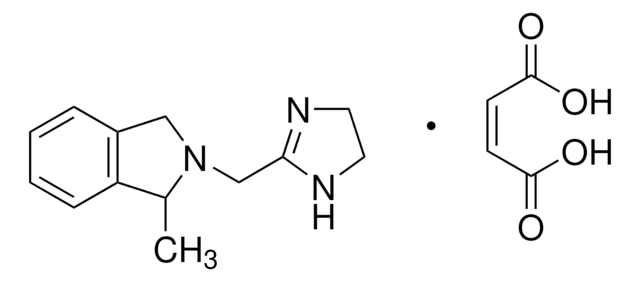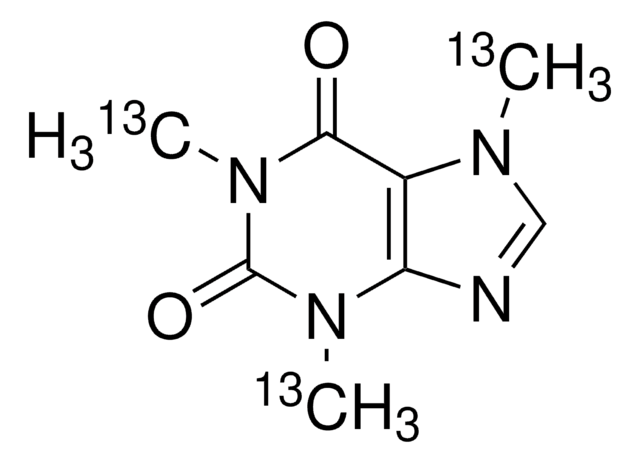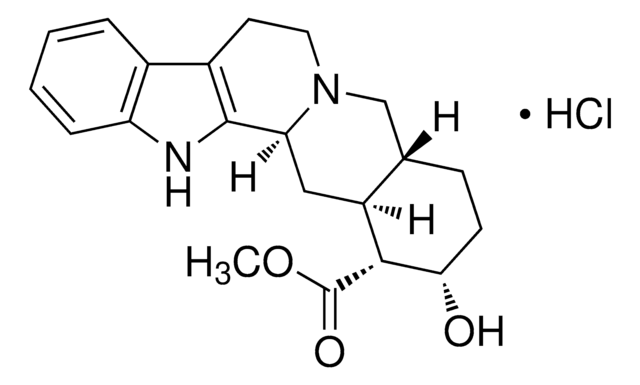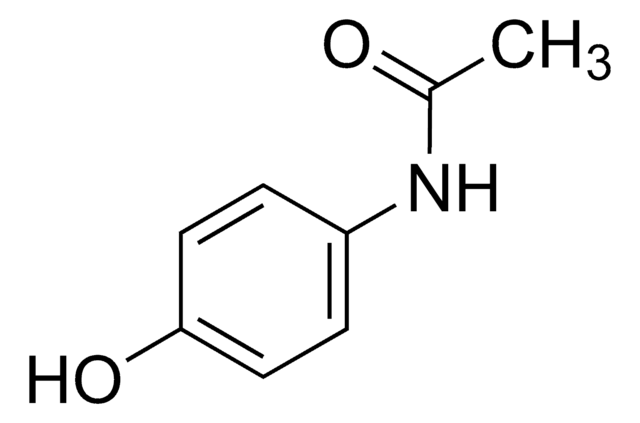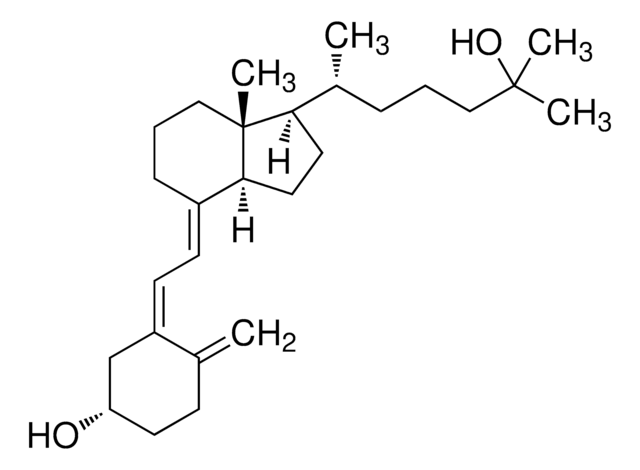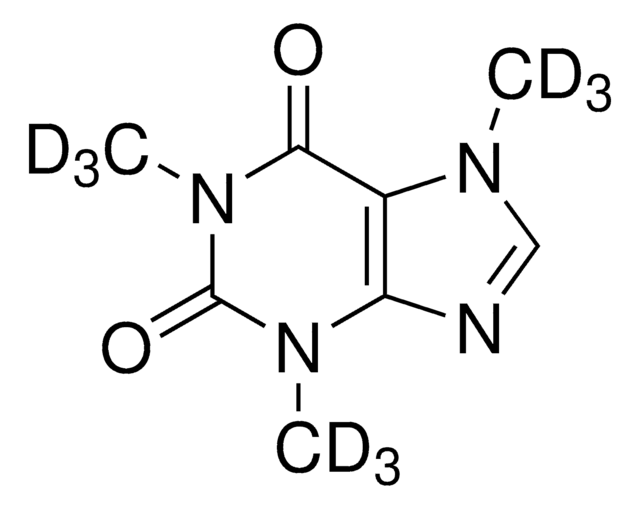Kluczowe dokumenty
C-051
Caffeine solution
1.0 mg/mL in methanol, ampule of 1 mL, certified reference material, Cerilliant®
About This Item
Polecane produkty
klasa czystości
certified reference material
Poziom jakości
Postać
liquid
Właściwości
SNAP-N-SPIKE®, SNAP-N-SHOOT®
opakowanie
ampule of 1 mL
producent / nazwa handlowa
Cerilliant®
stężenie
1.0 mg/mL in methanol
metody
gas chromatography (GC): suitable
liquid chromatography (LC): suitable
Zastosowanie
forensics and toxicology
format
single component solution
temp. przechowywania
−20°C
ciąg SMILES
CN1C(=O)N(C)c2ncn(C)c2C1=O
InChI
1S/C8H10N4O2/c1-10-4-9-6-5(10)7(13)12(3)8(14)11(6)2/h4H,1-3H3
Klucz InChI
RYYVLZVUVIJVGH-UHFFFAOYSA-N
informacje o genach
human ... ADORA1(134) , ADORA2A(135) , ADORA2B(136) , ADORA3(140)
Szukasz podobnych produktów? Odwiedź Przewodnik dotyczący porównywania produktów
Opis ogólny
Caffeine belongs to the class of active alkaloid compounds, mainly found in the leaves, fruits, and seeds of about 63 plant species. Coffee beans are the primary source of caffeine, in addition to tea leaves, chocolates, and energy drinks soft drinks. It is a central nervous system stimulant and acts by increasing alertness and reducing sleep.
Zastosowanie
- To determine caffeine content in an aqueous solution of green coffee beans by two methods based on Fourier transform infrared spectroscopy-attenuated total reflectance (FTIR-ATR) and fluorescence spectrophotometry
- Extraction of caffeine by automated homogeneous liquid-liquid microextraction (A-HLLME) from five different beverage samples for its quantification by high-performance liquid chromatography combined with UV detection
- Simultaneous estimation of caffeine and chlorogenic acids in ground green coffee samples by a UV/Vis spectrometric method
- Multi-residue determination of caffeine and paracetamol by square-wave voltammetry using poly(4-amino-3-hydroxynaphthalene sulfonic acid)-modified glassy carbon electrode (poly(AHNSA)/GCE in coca-cola, pepsi, and tea samples
- Cyclic voltammetric and differential pulse voltammetric based detection and quantitative analysis of paracetamol, tryptophan, and caffeine, both separately and simultaneously, using an electrochemical sensor founded on tin sulfide (SnS)-titanium dioxide (TiO2)-graphene oxide (GO) composite modified glassy carbon electrode
Cechy i korzyści
- Fully characterized under ISO/IEC 17025 and ISO 17034 accreditation
- Accompanied with a comprehensive Certificate of Analysis (CoA) with data on stability, homogeneity, accuracy of concentration, uncertainty, and traceability
- Rigorously tested through real-time stability studies to ensure accuracy and shelf life
- Gravimetrically prepared using qualified precision balances to ensure minimal uncertainty
- Flame sealed under argon into ampoules for long-term shelf life
- Offered in a convenient, DEA-exempt format to improve laboratory efficiency
Informacje prawne
produkt powiązany
Hasło ostrzegawcze
Danger
Zwroty wskazujące rodzaj zagrożenia
Zwroty wskazujące środki ostrożności
Klasyfikacja zagrożeń
Acute Tox. 3 Dermal - Acute Tox. 3 Inhalation - Acute Tox. 3 Oral - Flam. Liq. 2 - STOT SE 1
Kod klasy składowania
3 - Flammable liquids
Klasa zagrożenia wodnego (WGK)
WGK 1
Temperatura zapłonu (°F)
49.5 °F - closed cup
Temperatura zapłonu (°C)
9.7 °C - closed cup
Certyfikaty analizy (CoA)
Poszukaj Certyfikaty analizy (CoA), wpisując numer partii/serii produktów. Numery serii i partii można znaleźć na etykiecie produktu po słowach „seria” lub „partia”.
Masz już ten produkt?
Dokumenty związane z niedawno zakupionymi produktami zostały zamieszczone w Bibliotece dokumentów.
Klienci oglądali również te produkty
Nasz zespół naukowców ma doświadczenie we wszystkich obszarach badań, w tym w naukach przyrodniczych, materiałoznawstwie, syntezie chemicznej, chromatografii, analityce i wielu innych dziedzinach.
Skontaktuj się z zespołem ds. pomocy technicznej